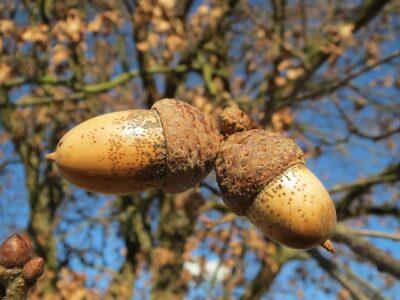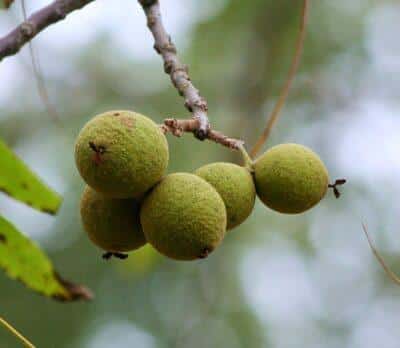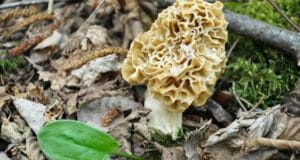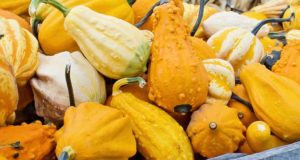|
Listen To The Article
|
Late summer and early fall are great times to harvest some of nature’s most nutritious bounty – nuts.
For both Native Americans and early colonists of our country, foraging for nuts was a large part of preparing for the winter months. Nuts are compact, easy to store and are rich sources of protein, dietary fiber, vitamins and antioxidants.
Foraging for nuts, or nutting, as it is also known, is a pleasant way to add to your food pantry. Children enjoy wandering in the woods gathering nuts, and it a great excuse to spend some time enjoying the cooler weather of autumn.
Most nuts are ready for eating in the fall. Although the types of trees vary according to geographic area, here are some of the most common nuts for fall foraging.
1. Acorns
The seeds from oak trees are plentiful around most of the country this time of year. Acorn kernels provide protein and energy-rich carbohydrates. The trouble is that most people’s first taste of a raw acorn is a bad experience. That is because acorns are filled with tannins.
Tannins give raw acorns a bitter, face-puckering quality. But the good news is that the tannins can be leached out with water. Boil the kernels whole for 15 minutes, pour the brown water off, add fresh water and boil for another 15 minutes. Repeat this cycle until the water is mostly clear.
White-oak acorns may require only one or two changes of water, while red-oak nuts usually need many changes. By the way, that tannin-rich brown water is a soothing topical wash for insect bites, stings, sunburn and rashes.
New Survival Seed Bank™ Lets You Plant A Full Acre Crisis Garden!
After the leaching process, you can use the blanched acorns in all kinds of recipes, including salads, soups and stews. You can even use them to make acorn butter and coffee! (Recommended: How To Cook, Eat And Even Make Coffee With Acorns.)
2. Beechnuts
The beech tree produces a tasty nut that tastes similar to a walnut and is high in protein content. These trees produce nut casings each year, but they only have full nuts every three years or so.
If there is an abundant beech tree near you, better hurry to gather these nuts, as they are a favorite with squirrels and raccoons.
Beechnuts will spoil quickly, so it’s a good idea to dry roast them soon after harvesting. To prepare beechnuts, roast them in the shell in full sun (if you have a squirrel-proof spot) or in a slow oven. Then place the nuts between two cotton towels and rub them to remove the shells.
Beechnuts also can be cold pressed to extract the oil.
3. Black walnuts
Black walnut trees are prized for their rich, dark wood and for their tasty nuts. Once again, you will get some stiff competition from four-legged creatures for these nuts. You also will have a tricky time getting to the delicious nutmeat.
You pretty much have to smash your way in with a hammer, combining shell fragments with edible nut pieces in the process. Another problem is that the brown juice inside the shell will stain anything with which it comes in contact.
For years, walnut lovers have tried various methods of getting to the meat, even running them over with their cars! Naturalist Euell Gibbons suggested wearing heavy boots and stomping the husks off with your feet. Another option is to simply wear rubber gloves and then cut and scrape the husks away with a knife. Once you have separated the meat from the shells, let the meat dry in full sun.
4. Butternuts
Butternuts have the same permanent staining problem as black walnuts, but they are a bit easier to crack open. The tasty butternut is a nutritional powerhouse, packing 28 percent protein, 61 percent fat and about 3,000 calories per pound.
The kernel can go rancid quickly, so shell and use butternuts soon after you have husked and dried them. You may eat them raw, roasted or baked in cakes or pies.
5. Hickory nuts
Hickory nuts are easier to crack than walnuts or butternuts, but you still will need a hammer or other tool. Hickory nut gathering can be a frustrating process. Although several kinds of hickory trees produce fruit with delicious nutmeats, others produce fruit that is quite bitter. And it can difficult to tell one kind from the other.
Here are the two most desirable hickory nuts:
- The shellbark hickory, which has rough, loose bark that separates in narrow strips.
- The shagbark hickory, which has a fringed trunk, with long, loose strips of bark that shed and accumulate at the foot of the tree.
Both types bear a nut encased in a thick, green husk that separates in four parts at the base when it is ripe. Another common thick-husked variety of hickory is the mockernut hickory. It yields sweet but very small nutmeats within a thick shell.
6. Pecans (wild and regular)
Do you know that pecans are actually a type of hickory nut? They are, but unlike their cousins, pecans are easy to shell and are both meaty and delicious. There are no bitter or inedible types of pecans.
This New Lantern Provides 100,000 Hours of Emergency Backup Lighting
Pecans are grown commercially in orchards, but roughly half of the nation’s market crop is produced from the native species. Wild pecans are a bit smaller than commercial varieties, but their shells crack easily to yield whole, sweet kernels.
7. Pine nuts
Although all pine trees produce a nut, there are only a few varieties that produce edible nuts. Most of these varieties are found in western North America and include stone pine, ponderosa pine, sugar pine, pinon pine and digger pine.
In the fall, the cones of these trees will open, exposing their large seeds. Shelling can be done by hand.
Pinons can be eaten raw or roasted. You can crack the shell between your teeth and eat the inner meat as you would with sunflower seeds.
As with all foraging, don’t pick or eat any seeds or nuts unless you are sure they are safe to eat. Also, be considerate. Don’t take more than you need. Leave some for other foragers and for the wildlife that depends on the nuts for food.
Fall foraging is a great way to enjoy the beauty of the new season along with some of nature’s best tasting and most nutritious foods.
What are your favorite “wild nuts” to eat? Do you have any shelling tips? Share your advice in the section below:
 Off The Grid News Better Ideas For Off The Grid Living
Off The Grid News Better Ideas For Off The Grid Living





